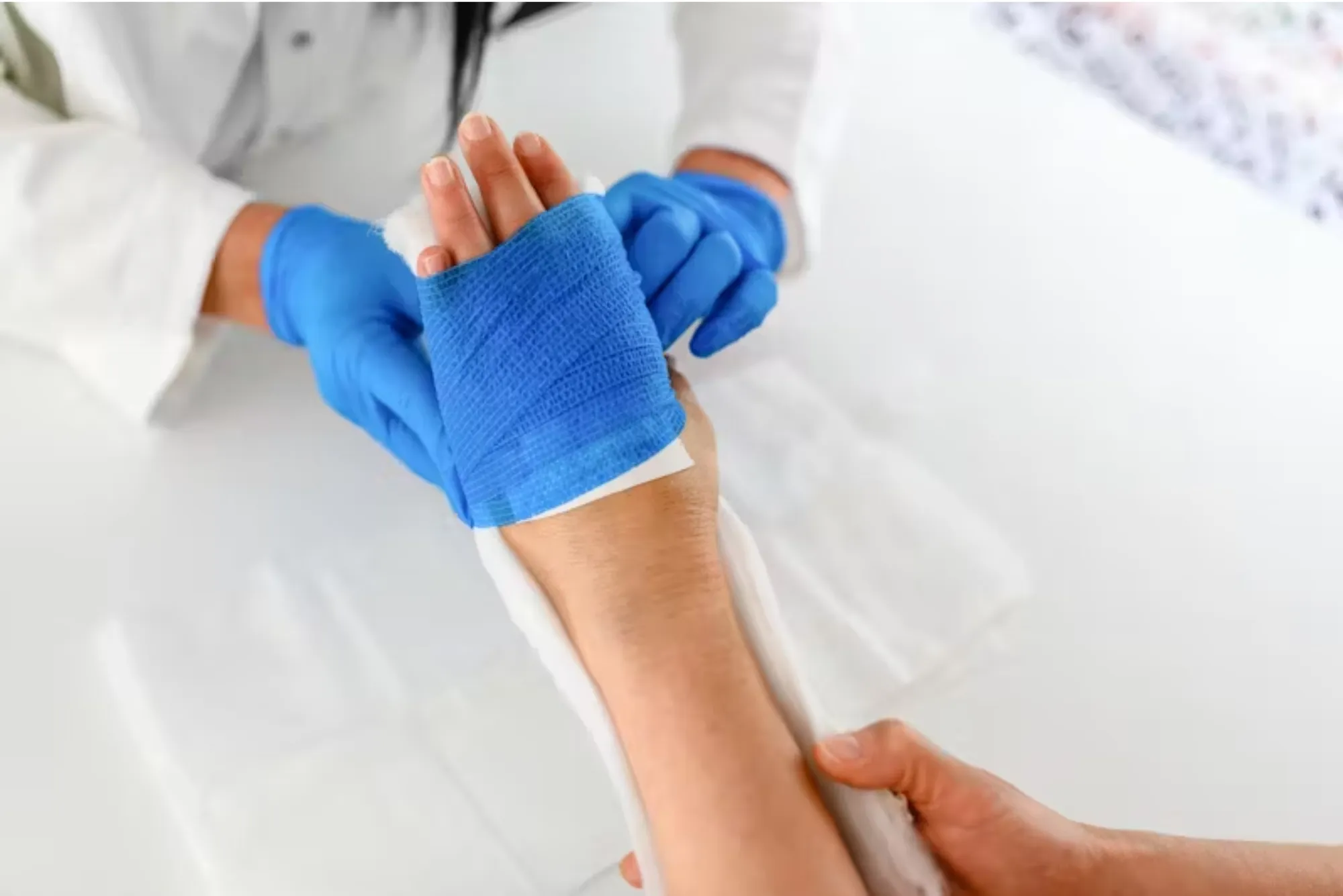When it comes to treating wounds, one of the most essential aspects of the healing process is choosing and applying the right wound care dressings. Proper wound care dressings not only help protect the wound from harmful bacteria and contaminants but also play a significant role in promoting faster healing and reducing the risk of complications, including infections. Here, we will explore the importance of using appropriate wound care dressings, the different types available, and how they contribute to infection prevention.
Understanding Wound Care
A wound provides an entry point for bacteria and other pathogens, which can lead to infections if not properly managed. Wound treatment requires cleansing the wound while applying a suitable dressing, followed by regular checks to watch the healing process.
Wound care dressings create a protective barrier that prevents external pollutants, such as bacteria, together with dirt, from accessing the wound site. Wound care dressings create a moist environment because this promotes both tissue healing and faster regenerative processes. Choosing a suitable wound dressing becomes essential because the right selection protects the wound from moisture loss while fighting against possible infections.
Types of Wound Care Dressings
Various wound care dressings are available in the market, each with an individual purpose for healing different types of wounds. The choice of dressing between proper healing and infection prevention remains essential for medical purposes.
- Hydrocolloid Dressings
Hydrocolloid dressings are used for wounds with moderate or minor drainage. They create a wet environment, which helps wounds heal more quickly by promoting cell development while keeping the wound surface hydrated. The airtight seal created by these dressings shields wounds and protects them against bacterial attack and external cross-contamination, reducing infection risks.
- Hydrogels
Hydrogel dressings best treat wounds that either lack exudate or display minimal fluid discharge. These dressings generate moisture near the wound surface; thus, the treatment reduces pain sensations while maintaining optimal healing conditions for wound restoration. Hydrogels function both as an infection barrier by creating moisture and as an infection prevention device by protecting from external particles.
- Foam Dressings
The applicability of foam dressing extends to treat wounds that generate moderate through heavy exudate. The dressings both soak up extra fluid yet keep the wound area adequately moist. The wound management performance of foam dressings extends to their capability of protecting large wounds from infection by maintaining stable conditions that stop bacterial growth.
- Alginate Dressings
The substance derived from seaweed, known as alginate dressings, finds its main application in treating wounds with heavy fluid discharge. These wound dressings have a high absorption capacity for exudate, thus decreasing moisture levels to prevent bacterial growth. Alginate dressing controls bleeding through hemostatic properties, which makes the dressing suitable for bleeding wounds.
- Gauze Dressings
Gauze dressings represent one of the frequent choices for treating wound injuries. These dressings are available in various forms, such as sterile pads and rolls. Gauze dressings serve their main purpose by acting as a protective covering for wounds to block external contamination despite lacking the effectiveness of maintaining wound moisture. The dressings offer further protection and other bandage types for full wound coverage and fluid absorption.
The Role of Wound Care Dressings in Infection Prevention
Doctors need to apply suitable wound dressings as an essential step to minimize infection chances. Your healing process becomes more difficult when infections occur because this results in extended recovery durations, leading to prolonged recovery times and sometimes severe health problems. Dressing selection allows healthcare providers to obtain the following treatment benefits:
- Barrier to Contaminants
Bacteria, together with other microorganisms, easily infect open and exposed wounds. Wound care dressings function as protective shields to stop bacteria and dangerous particles from penetrating the wound space and triggering infections. Advanced dressings, including hydrocolloids and hydrogels, possess antimicrobial qualities to decrease infection chances in wounds - Control of Moisture
The prevention of infections depends highly on keeping wounds at their optimal moisture level. Both excessive moisture and dryness can contribute to complications. Under wet conditions, the skin becomes too soft and the chances of infections increase, while due to dryness the healing processes slow down. Wound care dressings offer the correct amount of moisture, which promotes quick recovery and stops conditions that could result in infection.
- Exudate Management
Exudate from wounds poses a bacterial growth risk when people fail to effectively control its fluid production. Wound dressings made from foam and alginate have the ability to absorb exudate, which maintains the right level of moisture needed to decrease the risk of infection. The proper selection of dressings to manage fluid build-up is crucial because excessive exudate extends the healing time by providing an excellent bacterial growth environment.
- Protection Against Trauma
Wounds that are exposed to physical trauma, like friction or impact, will be more likely to become infected. Wound care dressings apply protective covering over wounds that function as a protective cushion to shield healing tissues from disruptive outside forces as well as block harmful microorganisms. Proper protection in dressings prevents both undesired friction and possible microbial infection.
- Reduction of Pain and Discomfort
The process of treating many painful wounds becomes more uncomfortable when wound exposure occurs in open air or in contact with contaminants. Hydrogels and hydrocolloids function as appropriate wound dressings because they establish a moist environment supporting recovery and wound-related pain relief. The moist environment created by proper dressings minimizes pain and results in a better patient experience that leads to faster recovery.
When to Seek Professional Help for Wound Care
The majority of wounds can be properly treated with appropriate dressing techniques, but certain ones demand medical intervention. Medical attention is needed if you observe signs of infection, including increased redness, warmth, swelling, discharge from the wound site together, and fever symptoms. When these situations arise, patients need to obtain medical advice from a professional healthcare provider. Requesting assistance from the nurse near me for injection services helps guarantee appropriate wound treatment and minimizes infection risks.
Conclusion
Wound care dressings function as an essential element to protect patients from infections while accelerating healing processes, which leads to superior treatment results. People who get proper wound dressings according to their wound type will minimize infection risks and minimize the healing time. Different wound care dressings play a vital role in preventing infections and speeding up the healing process. Proper wound care is essential not only for healing but for maintaining overall health and well-being, making it a vital part of everyday healthcare management.




